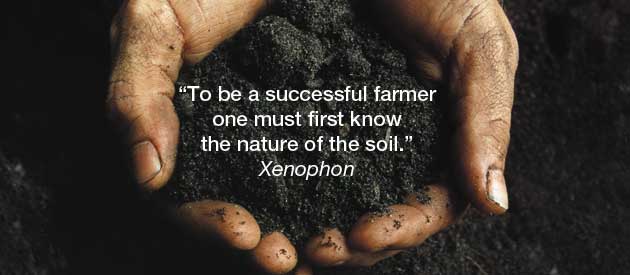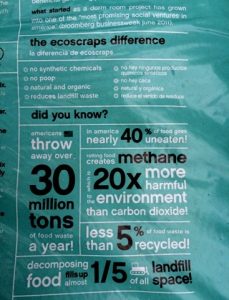Two years ago my mother and her partner moved to their dream home – a house on three acres, deep in the Colorado countryside. It was a given from the get-go that they would be working toward establishing a small-scale organic farm like one of the hundreds popping up all over the country.
My mother had worked for a few years up to that point at an organic greenhouse. The experience opened her eyes to the wonderful, and constantly expanding, science of organic farming. How could she, and how would she integrate what she was learning into her own homesteading adventure?
From someone on the outside who had only ever read about the brave new world of hobby farming, I had a few (incredibly mundane) questions: what goals make sense for someone just starting out? And although organic farming is constantly growing and “new” (usually super old, actually) techniques are being created – what companies could be trusted to be true to the organic creed?
Everything revolves around dirt
The most basic concerns for any gardening project is the soil. Dead topsoil won’t yield life regardless of how much water you pour over it. Traditional practices involve inundating the soil with fertilizers – chemicals that have been proven to increase yields and permanently destroy waterways and irreparably damage existing natural systems. (See the Mississippi Delta.)

It sounds great in theory, sure, but when you’re determined to go organic the only way to increase the health of your soil is to boost it naturally with compost and nurture it as if you were letting nature take over (don’t actually let nature take over, though, you’ll never get it back).

There are soils – most notably EcoScraps – that incorporate compost into their potting and gardening soil mixes – and EcoScraps is a brand my mom and I both swear by. It’s a little weird filling your raised beds with soil that has fruit stickers in it, but the company from Provo, Utah has a lot of heart packed into their 1.5 cubic foot product.
They collect food scraps from food industries, grocery stores and stadiums and compost it – a process that breaks down any inorganic chemicals into their organic by-products. This organic compost is mixed into soil and sold for…well, definitely more than most people think dirt is worth.
The importance of organic soil
The thing about buying organic soil with compost is that the soil you are buying is teeming with micro-organisms that are not only imperative for healthy plant growth, but that are hard to introduce to soil that is weak from lack of proper natural care.

To get the mix naturally a person would have to compost their own food waste and let it break down over one to two years, work that into existing soil, and then introduce cover crops for several growing seasons to cultivate the kind of healthy soil that is already being sold to you by the cubic foot in every major hardware store in the United States.
The EcoScraps bags don’t tell you that, but they do tell you a lot of other interesting tidbits about what we as Americans do with our food waste and what our waste becomes in landfills when it could be used to refuel our gardens.
Composting is definitely a must in organic farming and gardening, though. Buying starter soil to get your plants going is great, but you’re going to want a steady supply of hot, loamy mulch to mix into your soil. Many communities have help for people looking to start composting (and some have laws against it) so looking into local programs is worth it.
The average composter can cost over one hundred dollars, but there are many community plans that provide grants so you can get composters for half-price, or sometimes even free. And they even offer classes and starter bacteria to speed up the break-down process.
What do you worry about as a hobby farmer once you’ve got your soil locked down? Well, you need to think about what you’re going to plant. Or that’s what we do, at least.
